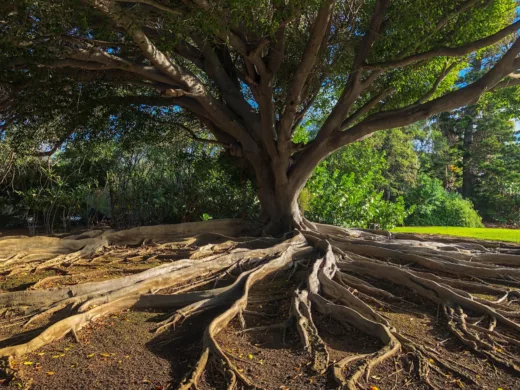
Photo: Crystal Mirallegro / Unsplash
Tinking space Nature
Valuable diversity
New species are discovered every year - and scientists estimate that there are millions of animals, plants and microorganisms that have not yet been researched worldwide. You can read about the value of biodiversity for people today and in the future here.

Photo: Crystal Mirallegro / Unsplash
Biological diversity (biodiversity) is what makes up life on earth, it is unique, fascinating - and worth protecting in itself. According to a survey, more than 95 per cent of people in Germany believe that our quality of life and well-being is based on biodiversity[1] - no wonder, as without plants, animals and microorganisms there would be no clean water, fertile soil or crops. Our world only functions thanks to the interplay of biodiversity. For climate researcher Dr José L. Lozán from the University of Hamburg, "Biodiversity [is] a valuable asset that humans use directly or indirectly in a variety of ways, for example as food, medicine, raw materials, climate regulators, flood protection or for recreation."[2]
The value of diversity
In order to emphasise the value of nature and raise awareness of why it is worth protecting, researchers also record its benefits for people in figures - whether in terms of quality of life or for the economy. The study "Natural Capital Germany - TEEB DE", for example, shows how green spaces in cities can reduce air pollution. For example, one fifth of the dust emissions produced in the Barcelona metropolis are absorbed by urban nature.[3] Most native crops and wild plants depend on insects to pollinate their flowers so that they can grow fruit. The economic value of products that depend on this "service" of nature is estimated to be between 235 and 577 billion US dollars worldwide.[4] Another example: Forests provide recreation and a habitat for a variety of species. The wood from trees also provides us with energy and is the basis for products such as furniture and much more. All those branches of industry that rely on wood as a commodity generate 3.4 per cent of gross value added in Germany (BMELV 2011)[5].
Protecting diversity internationally
The Convention on Biological Diversity was adopted at a United Nations conference in 1992 to protect biodiversity. Since then (as of February 2018), 196 countries have signed this treaty. The aim is to conserve biodiversity, utilise its components sustainably and ensure its fair use by third parties.[6] The Nagoya Protocol, which came into force in 2014, also regulates exactly how poorer countries can benefit from their country's diversity. For example, if plants with special properties grow there, they can be used to develop medicines or cosmetic products. If researchers use dead or living material that contains genetic material (genetic resources), the countries of origin should receive a fair share. Find out more about the Nagoya Protocol here.
Excursus biodiversity
Biodiversity - the term stands for life on earth - encompasses various areas: On the one hand, it includes the diversity of species. Around two million plant and animal species are already known; it is estimated that there are actually ten times as many. But even within a species, individuals differ; the genetic material is not identical, so there is also genetic diversity. And last but not least, the diversity of ecosystems characterises our environment, whether coral reefs, savannahs or tropical rainforests[7].
[1] https://de.statista.com/statistik/daten/studie/154339/umfrage/zustimmung-zu-dem-zusammenhang-von-biodiversitaet-und-lebensqualitaet/
[2] https://www.klima-warnsignale.uni-hamburg.de/wp-content/uploads/2017/01/gutt_auliya.pdf
[3] https://www.ufz.de/export/data/462/211806_TEEBDE_Synthese_Deutsch_BF.pdf
[4] https://www.ufz.de/export/data/462/211806_TEEBDE_Synthese_Deutsch_BF.pdf
[5] https://www.ufz.de/export/data/462/211806_TEEBDE_Synthese_Deutsch_BF.pdf
[6] https://www.bfn.de/themen/biologische-vielfalt/uebereinkommen-ueber-die-biologische-vielfalt-cbd.html
[7] https://fzs.org/de/themen/biodiversitaet-die-vielfalt-des-lebens/

